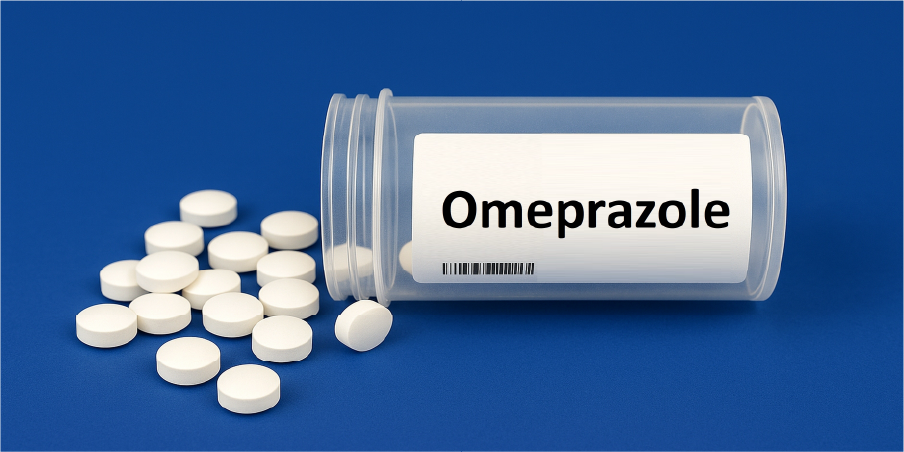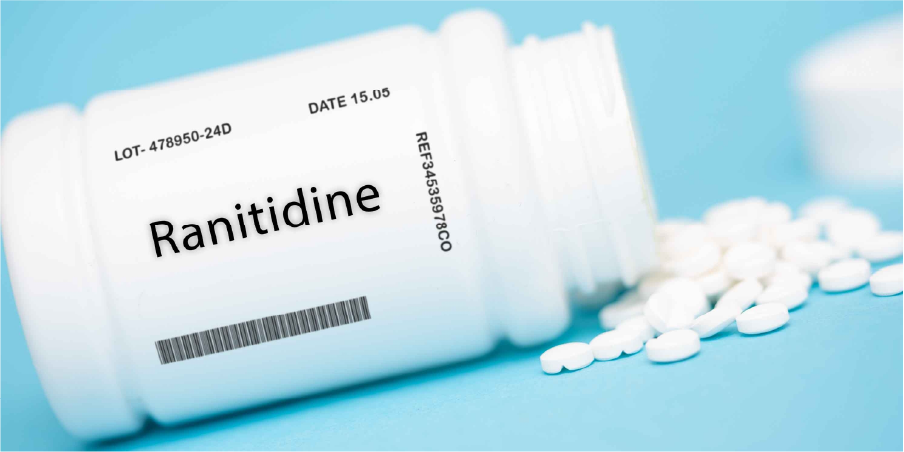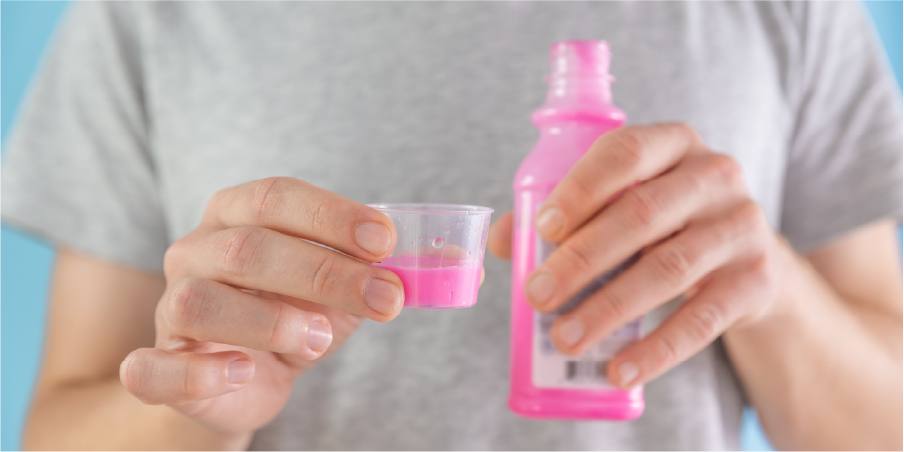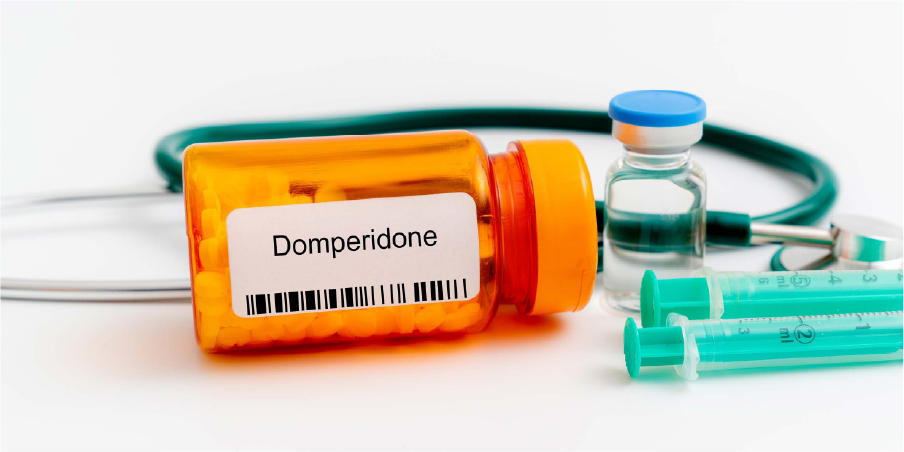Content on this page:
Content on this page:
Principles of Therapy
Treatment Goals
The treatment goals are relief of symptoms, healing of esophagitis, prevention of recurrence and complications, and improvement of quality of life.
Empiric Therapy
The current consensus is that for patients with uncomplicated reflux symptoms, empiric therapy is the appropriate initial management. Patients presenting with typical symptoms of gastroesophageal reflux disease in the absence of long-standing, frequently recurring, progressive alarm symptoms or complicated disease may be started on empiric treatment without further investigation. Acid suppressive therapy is currently the mainstay of treatment for symptom relief in gastroesophageal reflux disease in both acute and long-term treatment. A proton pump inhibitor is the drug of choice and recommended as initial therapy because of its superior safety. Patients with chest pain or GERD-related non-cardiac chest pain should have a thorough initial cardiac evaluation prior to starting empiric therapy. A short course of proton pump inhibitor therapy is effective in gastroesophageal reflux disease patients treated empirically, and the duration varies from 8-12 weeks. This should be tried for 4-8 weeks in patients with typical gastroesophageal reflux disease symptoms who have no alarm symptoms. It is recommended to attempt to discontinue treatment in patients whose typical gastroesophageal reflux disease symptoms respond to an 8-week empiric treatment. Patients who present with atypical or extraesophageal manifestations take a longer time to respond to empiric therapy and often require twice-daily dosing of proton pump inhibitors for at least 8-12 weeks.
Pharmacological therapy
 Gastroesophageal Reflux Disease_Management 1
Gastroesophageal Reflux Disease_Management 1Empiric Therapy
Proton Pump Inhibitors (PPIs)
Example drugs: Dexlansoprazole, Esomeprazole, Lansoprazole, Omeprazole, Pantoprazole, Rabeprazole
Proton pump inhibitors are the most potent type of acid suppressants. These provide the most rapid symptom relief and heal esophagitis in the highest proportion of patients. Rabeprazole's high pKa gives it a slightly faster onset of action, and since it is metabolized to a lesser extent via CYP2C19, gene polymorphism does not influence its gastric acid suppression. Proton pump inhibitors are the cornerstone of therapy for erosive esophagitis when given at a standard dose once daily for 8 weeks. These are recommended for both moderate and severe gastroesophageal reflux disease and its complications (eg Barrett's esophagus, ulcerations, bleeding, strictures, malignancy). No clear advantage has been shown with the use of one proton pump inhibitor over another in gastroesophageal reflux disease therapy. Proton pump inhibitors are substituted benzimidazoles that irreversibly bind the H+/K+ ATPase, the final step in gastric acid secretion.
 Gastroesophageal Reflux Disease_Management 2
Gastroesophageal Reflux Disease_Management 2Proton pump inhibitors should be given 30-60 minutes prior to meals to give proton pump inhibitors time to interact with an activated pump. These are most effective when taken before the first meal of the day since the number of H+/K+ ATPase present in parietal cells is greatest following a prolonged fasting. Dexlansoprazole can be taken with or without food. Optimizing proton pump inhibitor therapy in patients with reflux symptoms despite standard once-daily dosing can be done by splitting the dose, doubling the dose or switching to another proton pump inhibitor. On-demand therapy with a proton pump inhibitor is used where symptom control is the primary objective (eg patients with esophageal gastroesophageal reflux disease syndrome without esophagitis or mild erosive gastroesophageal reflux disease). A combination of immediate-release Omeprazole and Sodium bicarbonate, when given at bedtime, provides good control of intragastric pH during the first 4 hours of sleep. A continuous therapy with a proton pump inhibitor is recommended to maintain a healed mucosa, and preventing recurrence of symptoms (eg in patients with erosive esophagitis). These are generally well tolerated. The side effects reported were minor such as diarrhea, abdominal pain, headache which resolve as treatment is discontinued. Superiority in the treatment of reflux esophagitis is supported by several reviews and trials.
Proton pump inhibitors are recommended empirical therapy for patients with non-cardiac chest pain is given twice daily for 4 weeks. These are initial management for patients with suspected extraesophageal reflux syndrome. Twice-daily therapy for 8-12 weeks if given as empiric therapy. For patients with partial response to once-daily therapy, adjust dose timing and/or consider twice-daily dosing, especially in patient with nighttime symptoms, sleep disturbance, or variable schedules. A specialist referral should be considered if patient fails empiric therapy with proton pump inhibitor as non-GERD etiologies must be excluded. Pregnant patients with gastroesophageal reflux disease may be given a short-term proton pump inhibitor in the last two trimesters of pregnancy if clinically indicated. Other options include H2RAs (eg Ranitidine) and antacids except for preparations containing sodium bicarbonate.
Histamine2-Receptor Antagonists (H2RAs)
 Gastroesophageal Reflux Disease_Management 3
Gastroesophageal Reflux Disease_Management 3Example drugs: Cimetidine, Famotidine, Nizatidine, Ranitidine, Roxatidine
Histamine2-receptor antagonists are recommended in divided doses for symptomatic relief of milder forms of gastroesophageal reflux disease. These have a role in inhibiting nocturnal acid secretion in mild erosive esophagitis or non-erosive reflux disease. When given either after an evening meal or at bedtime, H2RAs often provide effective nighttime relief. When given as a supplement to proton pump inhibitor therapy, only a small dose of H2RAs at bedtime is recommended and given at a well-separated time from the proton pump inhibitor evening dose. These can be used on a short-term basis as tachyphylaxis can occur with long-term therapy. Histamine2-receptor antagonists decrease gastric acid production, particularly in the postprandial state, without affecting esophagogastric barrier dysfunction. These are associated with a low incidence of adverse effects (4%). These may be given intermittently to patients who are intolerant of proton pump inhibitors. Numerous, randomized, controlled trials have shown that a standard dose of H2RAs is more effective than placebo in the treatment of reflux symptoms and healing of esophagitis.
Potassium-Competitive Acid Blockers (PCABs)
Example drugs: Fexuprazan, Tegoprazan, Vonoprazan
Potassium-competitive acid blockers reversibly inhibit the activity of H+/K+ ATPase by competing for potassium on the luminal side of the parietal cell. These are indicated for reflux (erosive) esophagitis. These are a treatment option for patients with PPI-resistant gastroesophageal reflux disease, including non-erosive reflux disease and PPI-resistant non-erosive reflux disease. These have a faster onset of action compared to proton pump inhibitors, and absorption is not affected by food.
Maintenance Therapy
The goal of maintenance therapy is to have a symptom-free patient without esophagitis. The maintenance treatment for gastroesophageal reflux disease is recommended at the lowest effective dose. Step-down therapy should be attempted. Use the lowest dose and least potent medication that can obtain a complete and sustained symptomatic response. The need for maintenance therapy is determined by the impact of the residual symptoms on the patient’s quality of life.
The type of maintenance therapy is based on the duration of treatment. Continuous maintenance therapy refers to daily administration of treatment for months or even years to prevent relapse of gastroesophageal reflux disease symptoms. This is given mainly for those with frequent symptoms, strictures, or moderate to severe ERD. Discontinuous therapy, on the other hand, is either intermittent or on-demand. Intermittent therapy is patient-initiated short courses of therapy with a fixed duration taken even after symptoms have resolved. On-demand therapy is when a patient starts treatment when symptoms occur and continues until these are gone. Both intermittent and on-demand therapy are recommended for long-term maintenance of acid suppression and in patients with mild symptoms and with PPI-responsive non-erosive reflux disease.
Options for Chronic Acid Suppression
Step-up therapy involves starting treatment with the less potent agents and moving up for treatment response. If the patient does not respond to an H2RA within 2 weeks, switch to a proton pump inhibitor. If the patient does not respond to the standard once-daily proton pump inhibitor treatment for 8 weeks, double the dose of the same proton pump inhibitor (30 minutes prior to breakfast and 30 minutes prior to dinner). Other therapeutic options to consider in PPI-resistant gastroesophageal reflux disease include switching to a different proton pump inhibitor or potassium-competitive acid blocker, changing medication time, or adding a prokinetic agent, an alginate, or an H2RA at night. If the patient does not respond to the initial 4-week potassium-competitive acid blocker treatment at the standard dose, continue treatment for another 4 weeks. If the patient still does not respond to the above regimens, the patient’s symptoms are likely not secondary to reflux and warrant diagnostic testing.
Step-down therapy makes use initially of a potent acid suppressant, then decreasing dose or switching to less potent agents. This begins with the patient taking a proton pump inhibitor for 8 weeks, followed by an H2RA if gastroesophageal reflux disease symptoms were adequately controlled with a proton pump inhibitor. This is followed by stepping down further to on-demand use of antacids if the patient was asymptomatic while taking an H2RA. The majority of patients who experienced symptom relief after being placed on more than a single daily dose of proton pump inhibitor can be successfully stepped down to single-dose therapy without recurrence of reflux symptoms. Potassium-competitive acid blocker maintenance therapy is at half dose daily for patients responsive to initial treatment.
Chronic proton pump inhibitor therapy may be done for adequate symptom control. Even with adequate symptom control and proton pump inhibitor tolerability, the likelihood of long-term spontaneous remission of the disease is low. Though proton pump inhibitors are generally safe with long-term use, careful consideration is required in patients at risk for complications, eg iron deficiency, vitamin B12 deficiency, increased susceptibility to enteric infections, microscopic colitis, fractures and pneumonia. For patients with suspected extraesophageal gastroesophageal reflux disease syndrome with a concomitant esophageal gastroesophageal reflux disease syndrome, maintenance therapy is with once- or twice-daily proton pump inhibitors.
Adjunctive Therapy
Antacids and Alginates
 Gastroesophageal Reflux Disease_Management 4
Gastroesophageal Reflux Disease_Management 4Antacids and alginates are effective in short-term or intermittent symptom relief; an antacid-alginate combination is recommended for episodic and postprandial reflux symptoms. These are usually taken after each meal and at bedtime. Alginate reacts with gastric acid creating a viscous gel or raft above the gastric contents that acts as a mechanical barrier to reduce reflux into the esophagus. The mode of action is physical and does not depend on systemic absorption. Antacids, alginates and sucralfate are considered first-line agents for pregnant patients with gastroesophageal reflux disease who do not respond to lifestyle modifications.
Propulsives/Prokinetic Agents
 Gastroesophageal Reflux Disease_Management 5
Gastroesophageal Reflux Disease_Management 5Example drugs: Domperidone, Itopride, Metoclopramide, Mosapride
Prokinetic agents are effective in patients with mild symptoms. Domperidone has the advantage of having less pyramidal effects. Oral Metoclopramide may be given to patients unresponsive to conventional therapy. A combination of Mosapride with a proton pump inhibitor may have additional benefit when proton pump inhibitor monotherapy does not have satisfactory results, particularly in proton pump inhibitor resistance. Studies show that Mosapride does not have any significant CV effects even with concomitant administration of Ketoconazole and Erythromycin; Mosapride does not block the D2 receptor hence does not cause extrapyramidal effects. Long-term use is not recommended because of the risk of neurological, cardiac and other adverse effects. Treatment should be at the lowest effective dose and kept as short as possible.
Nonpharmacological
Lifestyle Modification
Lifestyle modification is considered the first line of treatment. Pregnant women who have gastroesophageal reflux disease should also be offered lifestyle modification as first-line therapy. All patients should be educated regarding factors that may worsen their gastroesophageal reflux disease symptoms, but lifestyle modifications alone typically do not provide adequate relief for most gastroesophageal reflux disease patients. Advice should be tailored to the circumstances of the individual patient. Avoidance of foods/drinks that may precipitate heartburn (eg spicy foods, onion, tomato-based products, citrus, carbonated drinks) and/or reflux (eg alcohol, coffee, chocolate, peppermint, fatty foods). Avoidance of medications that lower the esophageal sphincter pressure (eg calcium channel blockers, beta-agonists, alpha adrenergic agonists, Theophylline, nitrates, phosphodiesterase-5 [PDE-5] inhibitors) or irritate the esophagus (eg Ferrous sulfate, NSAIDs, bisphosphonates).
Adoption of behaviors that will help reduce esophageal acid exposure should be done. Weight loss should be advised for obese or overweight patients through dietary changes, physical exercise and behavioral therapy. Regular and mild-moderate physical exercise should be done; excessive exercise can induce gastroesophageal reflux disease. Smoking cessation, elevation of the head of the bed for patients who are troubled with heartburn or regurgitation when recumbent, avoiding meals within 3 hours of bedtime, avoiding recumbency for 2-3 hours postprandial, avoiding large meals and decreasing fat intake, and avoiding late meals or skipping meals may be advised to the patient.
Surgery
Antireflux Surgery
Antireflux surgery has evolved from an open type to a laparoscopic procedure and, in recent years, to transoral incisionless fundoplication. Surgical success is highest in patients presenting with typical gastroesophageal reflux disease symptoms and demonstrating a good response to treatment with a proton pump inhibitor. In considering antireflux surgery, inform patients regarding the risk of long-term proton pump inhibitor therapy after surgery. Esophageal manometry, ambulatory reflux studies, endoscopy and other functional testing should be done before antireflux surgery to rule out other disorders, eg achalasia, non-reflux-induced esophageal spasm, and scleroderma.
Indications
Failed medical management includes non-compliance with therapy, medication side effects, inadequate symptom control, and refractory gastroesophageal reflux disease. However, surgery is generally not recommended for those who are unresponsive to proton pump inhibitor therapy. Severe erosive gastroesophageal reflux disease or severe gastroesophageal reflux disease complications (eg peptic stricture, Barrett’s esophagus), large hiatal hernia, extraesophageal conditions (eg cough, asthma, chest pain, aspiration), young patients requiring long-term management, and patient preference are also indications for antireflux surgery. Despite success with medications, a patient may opt for surgery due to the cost of medications, and the life-long need to take acid-suppressive agents.
Fundoplication
 Gastroesophageal Reflux Disease_Management 6
Gastroesophageal Reflux Disease_Management 6
Laparoscopic fundoplication is the gold standard surgical treatment for gastroesophageal reflux disease. This involves either a partial or a complete (360 degrees) wrap of the lower esophageal sphincter with a section of the stomach, thus increasing lower esophageal sphincter pressure. The advantages include less pain, fewer incisional hernias, shorter hospital stays, quicker return to work, and less defective wraps at follow-up endoscopy. The complications include inability to belch and vomit, persistent dysphagia, postprandial pain, epigastric fullness, bloating, temporary swallowing discomfort, and intense flatus. Trans-oral or endoluminal fundoplication is a new modified version of an open or laparoscopic fundoplication and involves accessing the stomach through the mouth, eliminating the need for incisions. This may be an alternative to patients with gastroesophageal reflux disease with small hiatal hernia (≤2 cm) and Hill grade I or II with any of the following criteria: Chronic gastroesophageal reflux disease (≥6 months); long-term proton pump inhibitor use (≥6 months) for management of gastroesophageal reflux disease symptoms; refractory gastroesophageal reflux disease; regurgitation-predominant gastroesophageal reflux disease; and patient's preference (wish to avoid long-term proton pump inhibitor use). Recent publications have, however, noted long-term follow-up of patients who had antireflux surgery (up to 13 years post-op) showed a high rate of symptom relapse, which required continuing intake of antireflux medications. The expertise or experience of the surgeon performing the procedure is highly predictive of clinical success.
Endoluminal Treatments
Recent procedures, eg titanium beads implantation and full-thickness plication, intend to reduce acid reflux episodes or transient lower esophageal sphincter relaxations and increase lower esophageal sphincter basal pressure. This is currently performed in clinical trials, as durable long-term benefits have not been shown.
Magnetic Sphincter Augmentation
Magnetic sphincter augmentation may be an option for patients with gastroesophageal reflux disease. This is performed using the LINX Reflux Management System, which is a unique device used to treat gastroesophageal reflux disease by augmenting the native lower esophageal sphincter using magnets. This prevents reflux by preventing lower esophageal sphincter from opening to minimal gastric pressure. This is preferred over long-term use of proton pump inhibitors which is associated with osteoporosis and increased risk of fractures. The patient selection criteria include: No hiatal hernia >3 cm or a paraesophageal hernia; no esophagitis worse than Los Angeles (LA) class A or B; adequate esophageal motility with 70% of effective swallows and a distal wave amplitude >35 kg/m2; no Barrett's esophagus; and no prior esophageal or gastric surgery. This is not recommended in patients with BMI >35 kg/m2 and poor esophageal motility. The absolute contraindications include MRI >1.5 Tesla, active malignancy of the upper GI tract, and allergy to titanium, stainless steel or iron.
Radiofrequency (RF) Energy Application to the Lower Esophageal Sphincter (LES) Region (Stretta Procedure)
The Stretta procedure reduces postprandial transient lower esophageal sphincter relaxations, decreases compliance of the gastroesophageal junction, decreases esophageal acid sensitivity by inducing healing of esophageal erosive disease, and improves gastroparesis. This is useful in patients with challenging anatomy and should be considered in patients who are at high risk for surgery or who wish to avoid surgery. This may be an option for patients who do not wish to be on long-term medical treatment for gastroesophageal reflux disease and may be performed in patients with refractory GERD after laparoscopic fundoplication to improve symptoms and reduce medication requirements. This is performed endoscopically and does not require general anesthesia. The candidates for RF therapy include patients with: Frequent heartburn, regurgitation or both; adequate esophageal peristalsis and normal relaxation of the lower esophageal sphincter; a 24-hour pH study demonstrating pathologic acid reflux (eg >4% total acid exposure time, DeMeester composite score >14.7); non-erosive reflux disease, grade I or II esophagitis by Savary-Miller criteria (or LA grade A or B) or higher grades of esophagitis healed by drug therapy; and unsatisfactory control of gastroesophageal reflux disease despite high proton pump inhibitor therapy. The contraindications include: >3 cm long hiatal hernia detected radiographically or endoscopically; Grade III or IV esophagitis by Savary-Miller criteria that has not been healed after 2 months of medical treatment; inadequate esophageal peristalsis and incomplete lower esophageal sphincter relaxation in response to a swallow; and significant dysphagia.
Upper Esophageal Sphincter (UES) Augmentation
Upper esophageal sphincter augmentation is a process of applying an external compression device to the UES by applying 20-30 mmHg of cricoid pressure, leading to increased intraluminal UES pressure and resulting in an enhanced barrier to supraesophageal reflux. This is useful for the reduction of extraesophageal reflux symptoms.
